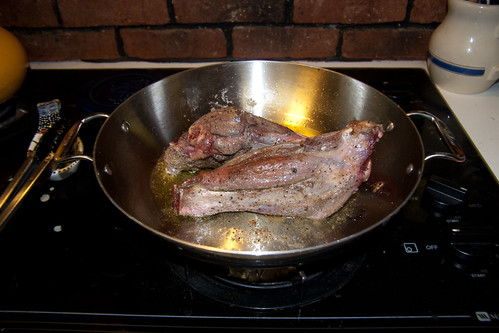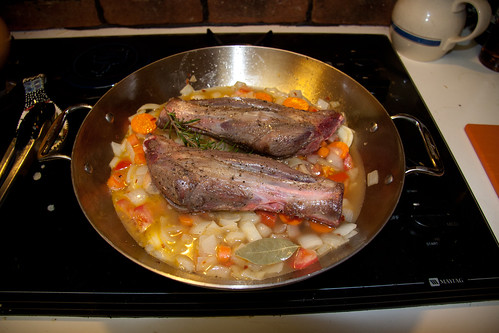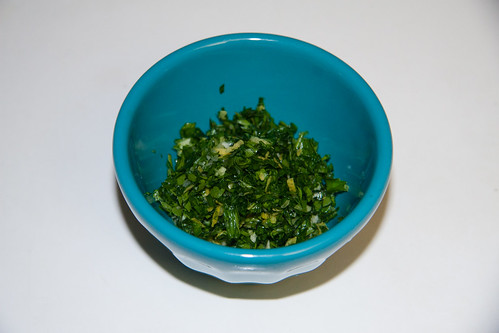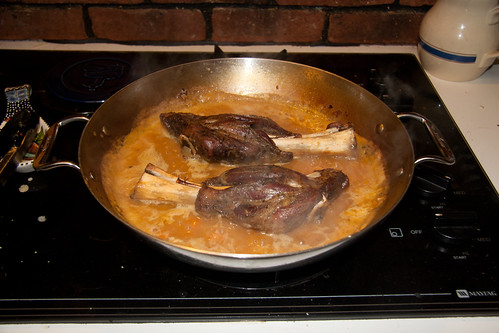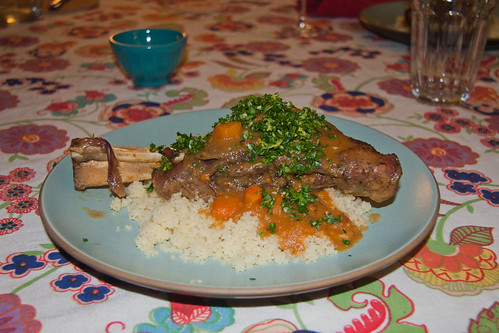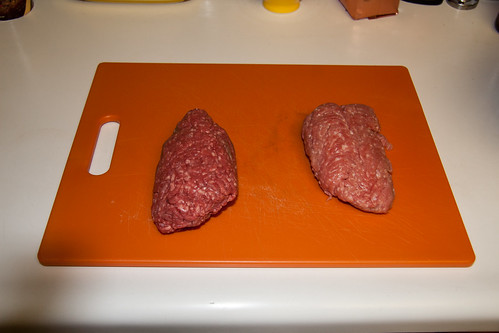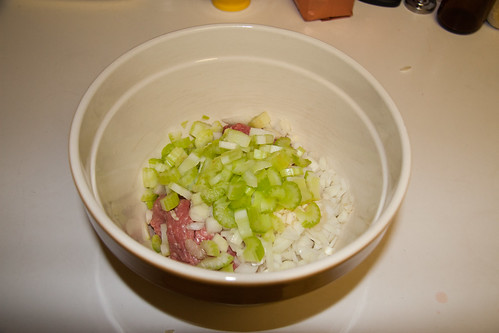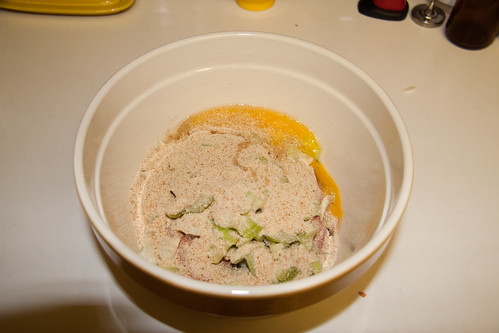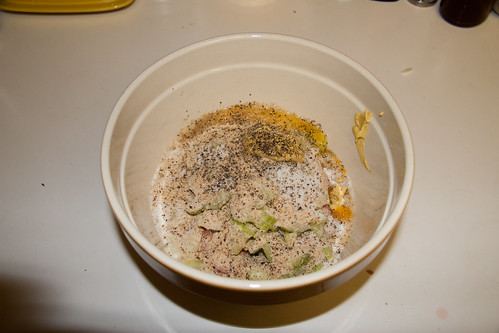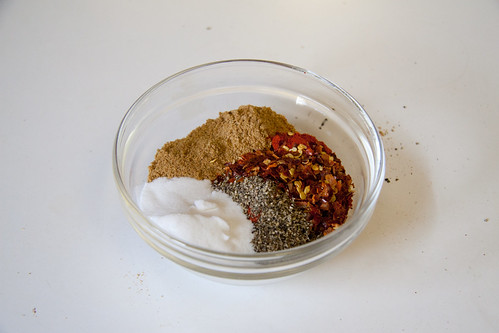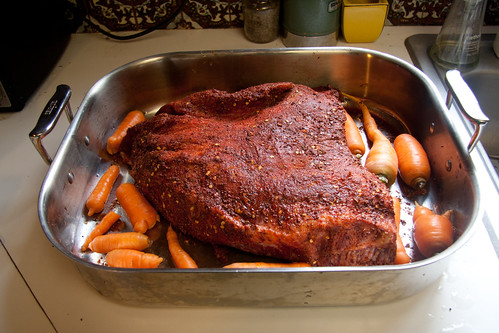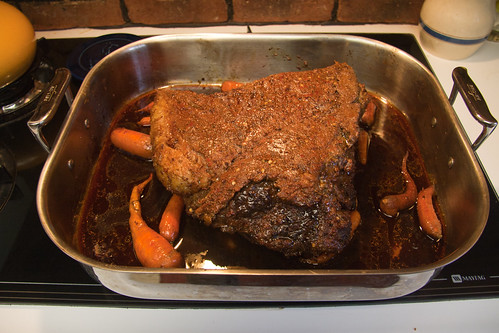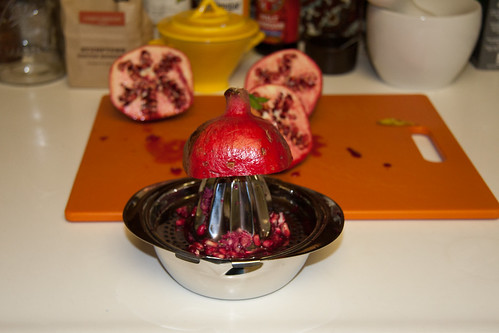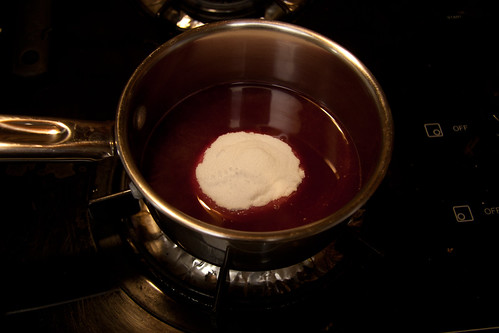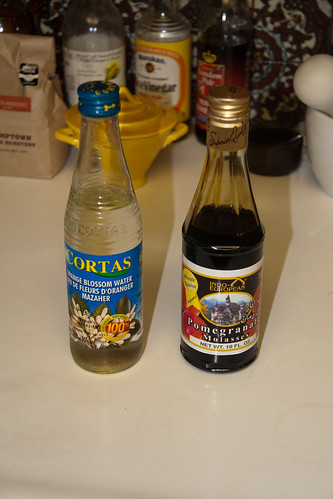Back in January, I shared the delicious chicken we got from Cache Creek Meat Company. Since then I’ve frequently stopped by their table for both simple and exotic animals, only to be turned away because they were sold out. Seeking to remedy this before the year ended, I leapt out of bed and went straight to the Farmers’ Market, a few weeks ago, getting there in time to have my pick of beasts. As luck would have it, they were flush with species, and I had my choice of chicken, duck, guinea fowl, and rabbit. Having just stocked the freezer with our CSA share, I could not bring home every animal that I would have enjoyed. I went with the one option I’d never had before: the guinea fowl.
A small, sartorially varied beast, the guinea fowl has a nice balance of dark and light meat, with a slim breast and long legs. Mine—the largest available—was nearly two pounds of bird. I consulted the Silver Spoon for ideas, and settled on a plan involving bacon, herbs, and a pot full of persimmons, potatoes, and onions.
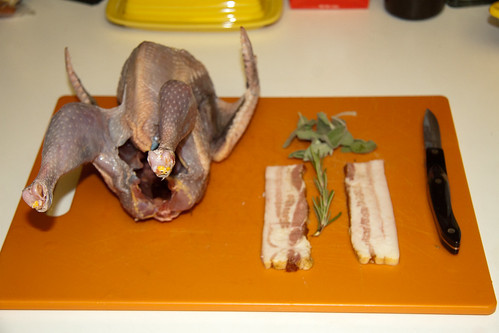
I began by cutting in half a few slices of Llano Seco’s wonderfully thick cut bacon. I placed two pieces in the bird’s cavity, along with sprigs of rosemary and thyme. Then I draped a few more pieces of bacon over the guinea fowl’s breast.

I pinned the bacon with some skewers, then trimmed the ends to allow for easy browning of the bird.
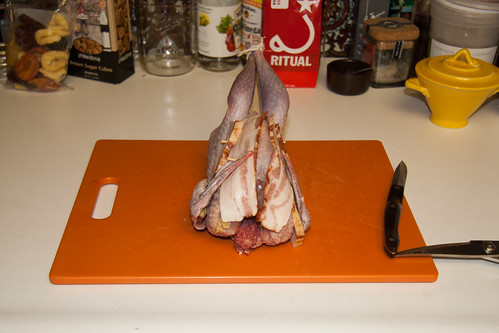
I brushed our large Le Creuset with oil and did my best to brown the bird allover. Meanwhile, I chopped the onions, persimmons, and potatoes that would cook with it.
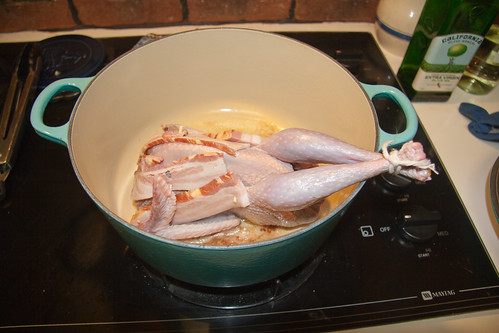
Once the bird was as well browned as I could manage in the deep pot, I threw in the onions and cooked them until they were translucent.

I returned the bird to the pot, and surrounded it with the onions, persimmons, and potatoes. I’ve seriously embraced persimmons this year, enjoying them both raw and roasted. I particularly enjoy them cooked along with meat in a large pot, with or without potatoes.

I covered the pot, and put it in the oven at 325°F. After 40 minutes, I removed the bacon from the sides of the bird and the cavity, then left it to cook longer with the lid off. At this point, the bird was still quite pale, but cooking with the lid removed would allow it to darken and let the skin crisp up a little.
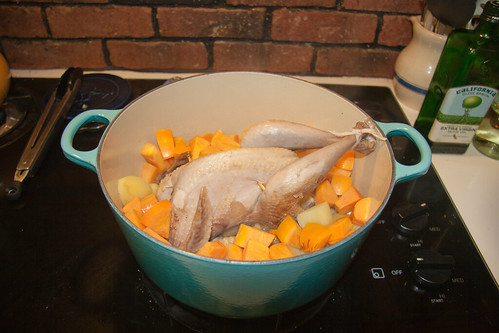
I sliced the bacon into lardons, and finished them in a pan on the stovetop. After another 15 minutes, the guinea fowl was done, and I removed it from the oven and the pot and let it rest.
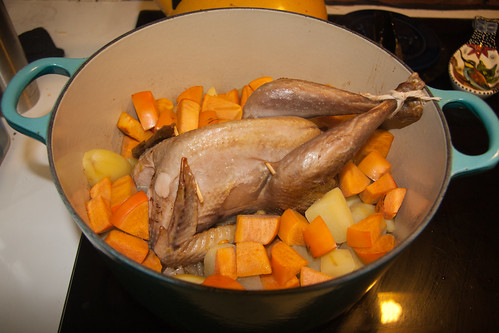
I tossed the lardons into the pot with the vegetables, stirred them together, and scooped them into a serving bowl with a slotted spoon. Before disposing of the liquid in the pot, I drizzled a little back on top of the vegetables. Then I carved up the guinea fowl.
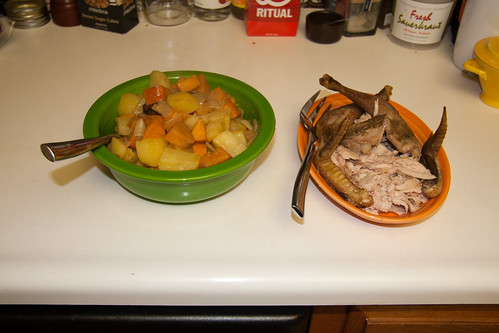
The guinea fowl was very moist and tender. While the light meat was about the color I expected, the legs were impressively dark, even a little ruddy. They were also a little sinewy, but quite tasty, and the breast was succulent, needing just a little salt and carrying a bit of flavor from the bacon. The roast potatoes and persimmons were a good complement—a wonderful mix of sweetness from the fruit and saltiness from the bacon. This was a fun bird to buy and cook.
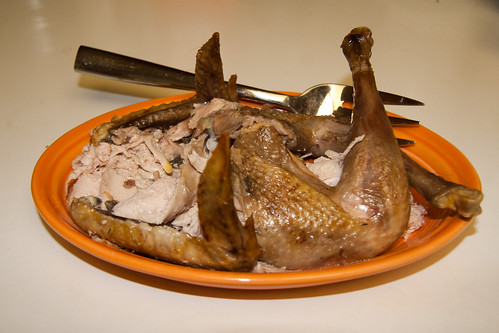
All the photos are here.

